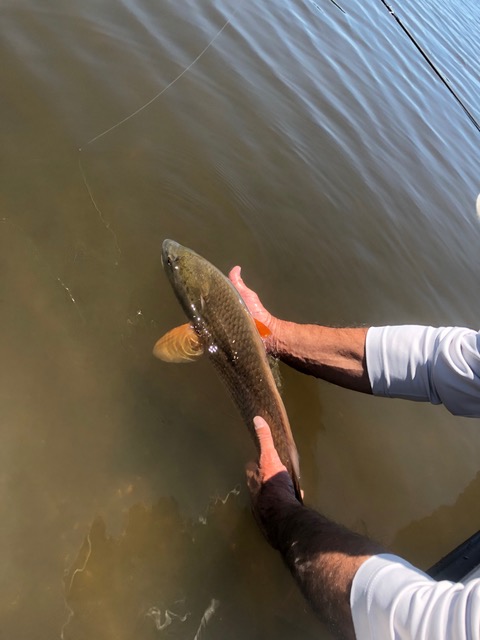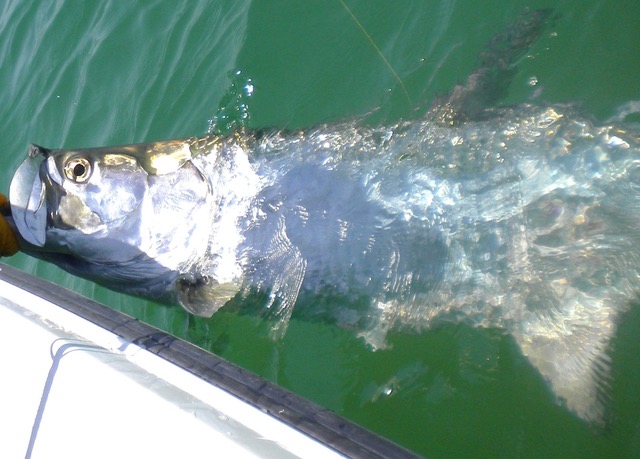by Capt. Mike Manis

In addition, as snook prepare for their spawn, they’ll be all over the beaches. However, they’ll still be inside around deep cuts and tidal creeks. Turtle Bay and around Cape Haze to the southern end of the West Wall can fish well. Too, along the east side around Big Dead Creek and Buzzard Bay north of Matlacha holds good fish. Here, I like a 2/0 Puglisi mangrove baitfish pattern fished with a seven or eight weight rigged with a floating line.
Redfish will be in the bushes, mangroves, in just about all the bays and sounds that surround the harbor. As the water temperature heats up, I like looking in areas adjacent to the intracoastal. The cooler oxygenated water coming in from the Gulf helps provide good healthy habitat. In addition, the intracoastal covers lots of ground with good shoreline from Stump Pass in Lemon Bay to Captiva Pass in Pine Island Sound. Here, I’ll throw the same gear and patterns that I throw for snook.
Sharks are abundant and soaking a piece of cut bait anywhere near the Cape Haze artificial reef has a chance of getting picked up. Cobia should be in the upper harbor at the mouth of the Myakka River. Big Jack crevalle can be found moving up and down the drop-off outside the West Wall. In many cases, they can be seen pushing water at the bar’s edge. In both cases, the cobia and jacks, just about any bait placed where they can see it should get eaten. Until next month, good tides.

